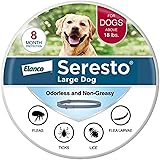In recent years, the use of communication buttons by dogs has gained popularity among pet owners and trainers alike. These devices, often referred to as “dog buttons,” enable pets to express their needs, desires, and even emotions more explicitly, fostering a deeper understanding and bond between dogs and their owners. Training your dog to use these buttons can seem daunting at first, but with patience, consistency, and the right approach, it can be a rewarding endeavor for both you and your furry friend. Here’s how to get started.
Step 1: Choosing Your Buttons
First, select a set of communication buttons that are durable, easy to press, and have a clear sound. Begin with a few basic commands or needs your dog frequently expresses, such as “eat,” “outside,” “play,” or “cuddle.” Each button should correspond to a specific request or action.
Step 2: Familiarization
Introduce the buttons to your dog without any expectation of immediate understanding. Allow them to explore and press the buttons, ensuring to react positively with praise or treats when they show interest. This step is crucial for building curiosity and engagement with the buttons.
Step 3: Association
Begin with one button at a time, associating it with a specific action or need. For example, if you’re starting with the “eat” button, press it every time before you feed your dog. Say the word “eat” as you press the button to create a verbal association. Consistency is key; make sure to do this every time the action occurs to reinforce the connection between the button, the word, and the action.
Step 4: Encouragement
Encourage your dog to press the button themselves by guiding their paw towards it or using treats as motivation. Once they press the button, immediately reward them with the action or item the button represents. This positive reinforcement helps them understand the cause and effect relationship.
Step 5: Expansion
As your dog becomes comfortable and consistent with one button, gradually introduce more, following the same process of association and reinforcement. Expand the vocabulary based on your dog’s needs and interests, always focusing on one button at a time to avoid confusion.
Step 6: Practice and Patience
Practice regularly but avoid overloading your dog with too much training at once. Short, frequent sessions are more effective and less stressful for your pet. Show patience and celebrate small milestones; mastering dog communication buttons is a gradual process that requires time and encouragement.
Step 7: Real-Life Application
Incorporate the use of the buttons into daily life, encouraging your dog to communicate their needs. If you notice them exhibiting a behavior that corresponds to a button (like heading towards the door when they want to go outside), prompt them to use the button instead. This real-life application reinforces the practical use of their new skills.
Tips for Success
- Keep the buttons in accessible locations related to their function (e.g., the “outside” button by the door).
- Be patient and consistent. Learning to communicate in this new way can be challenging for your dog, and progress may vary.
- Celebrate all attempts to communicate, even if your dog presses the wrong button. It’s about encouraging the effort and refining accuracy over time.
Training your dog to use communication buttons can enhance your relationship by providing them with a voice of their own. It’s a testament to the intelligence and adaptability of our canine companions, offering a glimpse into their thoughts and desires. With dedication and understanding, this training can transform the way you interact with your dog, deepening the bond you share.





















